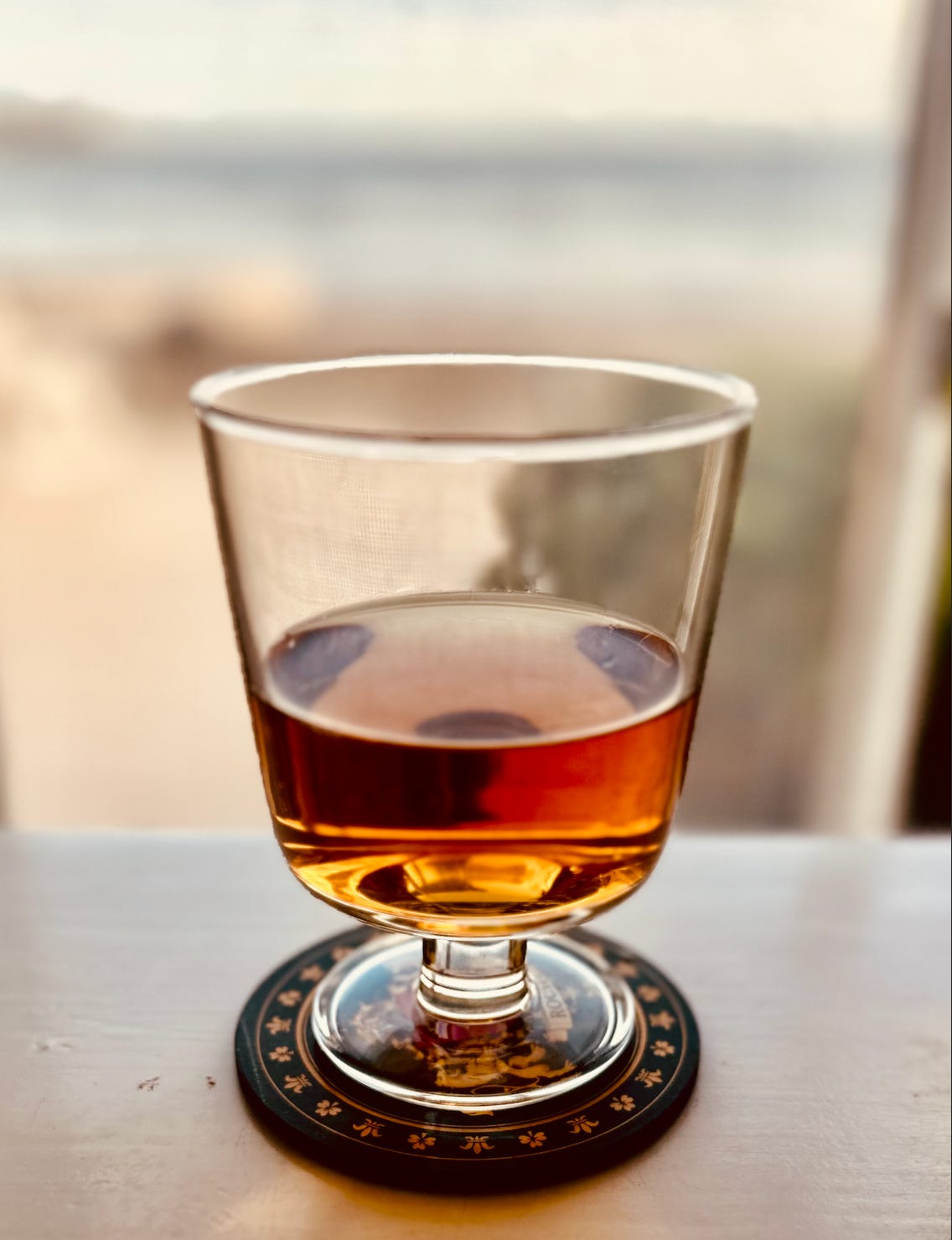This Cocktail Has No Chill
An easy-to-batch, easy-to-transport drink for those times when you want to serve a group and can’t keep a cocktail cold.
Most cocktails are served cold.
They are stirred or shaken over ice. In many cases, they are served over ice as well.
If, in your time on this planet, you have made even a few cocktails, you will recognize the instructions appended to most recipes: Stir over ice. Shake over ice. Swizzle over ice. Strain over ice. Cocktails as we know them developed along with the increasing availability of ice during the 1800s. For boozy mixed drinks, the story has long resembled the very worst of 90s rap: Ice, ice, baby.
Even the batched, bottled, and frozen cocktails we have examined recently are served chilly, cooled in the freezer, with water added for dilution.
Chilling a cocktail cuts the alcoholic burn of booze, and heightens some flavors. Try a sip of room-temperature gin, then try a sip of the same gin after it’s been in the freezer for a few hours: With cold gin, the botanicals pop. The alcoholic harshness is reduced. The sip goes down easier.
There’s a reason that Martinis should be served at the lowest possible temperature. Don’t believe Vanilla Ice; there’s no such thing as too cold.
But cold cocktails also come with inherent limitations and disadvantages, especially when it comes to location. The problem with ice is that it melts. Batched, bottled cocktails warm up. Some places just aren’t set up to produce pleasingly chilled drinks, or to keep them sufficiently cold over any length of time.
So what do you do when you want to consume or serve a cocktail but don’t have a good way to keep the temperature down? You make a room-temperature cocktail—a mix intentionally designed to be served at the temperature of the local air.
Room-temperature cocktails have several advantages.
They are easy to transport and serve in places where you might not have access to ice or a freezer. You can think of these as camping cocktails, designed for sitting around a fire in the woods, away from the hum of a freezer and your bizarrely large collection of silicone ice molds.
They are also very, very easy to batch and transport to, say, a friend’s house. Because they are intended to be served at room temperature, you won’t have to worry about cooling a drink.
True story: I once had to appear on a web video segment about making cocktails. The segment was taped in New York; I am based in Washington, D.C. Now, I am willing to lug large coolers of booze and ice and even glassware across town if the occasion demands it. But you can’t really do that on the train from D.C. to Manhattan.1
I also had very little information about what sort of environment I’d be working in for the segment: Would there be ice? A full bar? Glassware? Cocktail-making tools?
I didn’t know. So to hedge, I brought a single bottle of a pre-batched, pre-diluted, room-temperature cocktail with me. It survived the trip to New York; good times and good drinks were had by all.
This is obviously a fairly unusual use-case. Most people don’t travel to other cities to make drinks on television very often. (Even I don’t, usually.) But the point is that this class of cocktails can be useful for occasions when you want to batch a drink in advance to consume at another location and you won’t—or don’t know if you will—have temperature control when you arrive.
The best room-temperature cocktails are also quite tasty, with a gentle, soothing warmth that is well-suited to outside drinking, especially when it’s cool. During the pandemic, when small social gatherings in D.C. were often held outside, I would sometimes bring a batched room-temperature cocktail with me. No ice? No problem.
Even if you’re not traveling to a campsite or a TV studio, this sort of drink has other uses. It can work well for holidays when you have a large group to serve and you’re too busy to make single-serve drinks. This week’s drink is not this year’s Thanksgiving cocktail—there’s a fairly amusing new one next month—but with its nutty, caramel-tinged, almost butterscotch bittersweetness, it could certainly work as a Turkey Day digestif, paired with pumpkin pie.
Room-temperature cocktails, in other words, are easy to make and easy to transport. They solve the problem of keeping a cocktail cold by eliminating the need to do so.
So this week, we’re going to make my favorite room-temperature cocktail—a gently bitter, nutty-sweet concoction that resembles an inverted Cognac Negroni—and look at several swaps and variations.
This drink has no chill! And that’s what makes it great.
Just Say No(nino)
This drink involves Amaro Nonino, a medium-brown, light-and-nutty amaro that is famous almost entirely for its use in a single drink, the four-part whiskey sour variation known as the Paper Plane.
The Paper Plane is one of the most well-known new cocktails of the last 20-odd years. It is a very, very good drink.
This week’s drink is, in my opinion, even better.



